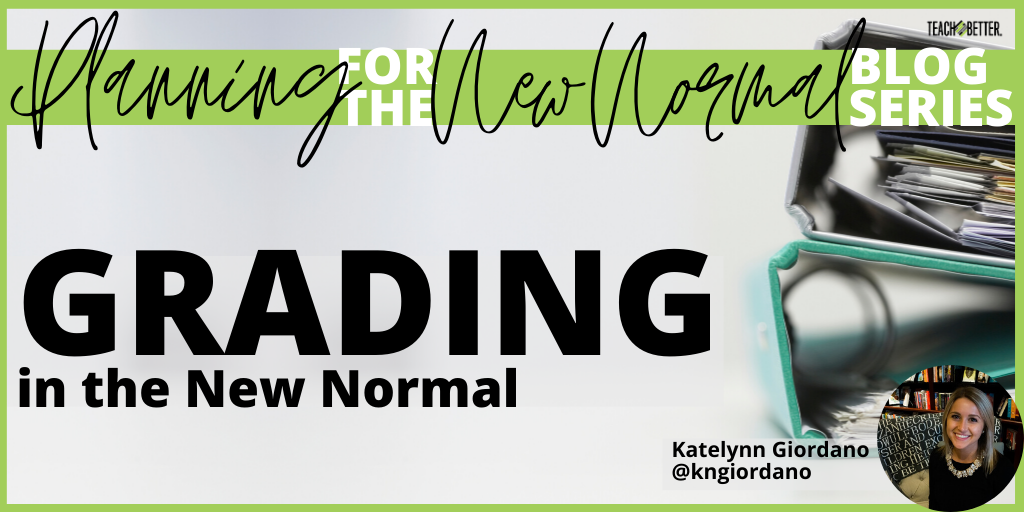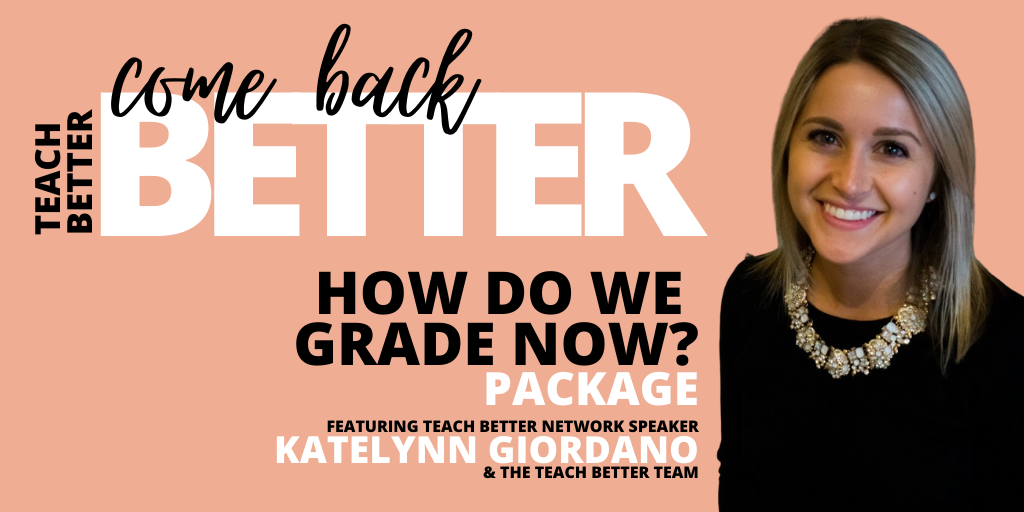TL;DR:
- Maintaining student motivation and accountability in a gradeless classroom.
- Using grades to communicate and provide feedback.
- Grading practices that promote a passion for learning, a willingness to take risks, and an increased investment in progress.
Education has undergone monumental shifts over the past few months. Whether you are in the classroom, in a leadership role, a district office, or a kindergarten classroom, you have witnessed massive change. One of the biggest areas of change has been in assessment and grading.
We’ve adapted to distance learning, virtual classes, and the idea that we have no clue what back to school will look like. There’s also been a shift in mindset and practice surrounding assessment. Many districts implemented the “do no harm” mentality, some completely eradicating grades.
The gradeless movement still holds students accountable. It absolutely does not lessen their personal responsibility. It just doesn’t use points to do it. Click To TweetIn my home state of Illinois, we were consistently met with the phrase, “Grades during this time should be used as feedback instead of instruments of compliance.”
I’m glad this was our approach, but frankly, I had one big question…
Shouldn’t this be our approach to grading all the time?
Because truly, what is a grade if not a communicative tool? Assessment exists to determine a student’s academic skill level. Grades exist to communicate that skill level to stakeholders.
So if the grade is not being used to provide feedback but rather to enforce a set of expectations, what’s the point? (Pun intended.)
Those fully invested in the gradeless (or evidence-based reporting or standards-based reporting) movement use ‘grades’ in this way all the time. Many see in students a renewed passion for learning, a willingness to take risks, and an increased investment in progress. It’s a big shift, but one that can be so very rewarding.
But it’s hard to see that as a burnt out teacher, a parent pushed to the limit, or an anxious educator waiting for news about the fall. Honestly, it’s hard to see the benefit unless you’ve implemented it yourself.
I know, because at one point, I was a big resistor.
The pushback I hear most often is that, if we remove grades, students will lack the motivation to do anything. They will not see the point because they won’t earn points. And, on top of that, there is a fear that students will not be held accountable for their work.
Despite my former resistance, I have not seen that to be true.
The gradeless movement still holds students accountable. It absolutely does not lessen their personal responsibility. It just doesn’t use points to do it.
Instead, in the gradeless class, students are taught accountability like any other skill. Expectations are discussed and agreed on, scaffolds are provided to support students as they grow. Lessons are taught to help students practice and develop the skill. There are measures and consequences in place that hold students responsible for their work.
For example, in my class, I keep a ‘late log’ that tracks whether students have turned assignments in on time (or at all). This is possible in any type of classroom, whether in-person or virtual. Many LMS systems have it built in.
But the difference is, the late work does not impact their grade.
Rather, it acts as a behavior tracker. It allows me to see when a student is struggling. It gives me a starting point for a conversation with the student about their behavior.
From it, I obtain valuable information to implement additional support. Additionally, there are consequences used in tandem with the late log which help curb the behavior.
But what about student motivation?
Will students bother to complete assignments if they won’t get points?
This comes down to an issue of extrinsic vs. intrinsic motivation, or as some like to call it, the carrots and sticks approach. Students should absolutely understand how each assignment applies to their learning and why doing it matters. This can be as simple as communicating the objective or learning goal; tell them what they will accomplish by doing this work.
In addition to putting learning targets on every assignment, I also explain to my students that each task is an opportunity to get feedback from me. Feedback that will help them understand where they are in their mastery of a skill and what they need to do to achieve that goal.
The inclusion of the learning target gives me a starting point for the feedback, allowing me to target my comments and suggestions. I frequently include comments like, “You haven’t quite reached mastery of the skill yet. To get there, you need to…”
This gives students an understanding of where they currently are, as well as actionable steps to take in the future. Many students use this information to retake summative assessments, or if it’s on a formative, they will use it when the summative takes place.
Students also know that if they don’t meet a goal right away or if they struggle on an assignment, it will not hurt them. This is an important component of the gradeless classroom, because it is where learning really takes off. Where risk-taking occurs. Where a positive culture around failure is developed. Students are not overly stressed about the negative impact of a task; they know they can try and fail, so they are infinitely more willing to give it a shot.
[scroll down to keep reading]Grading in the new normal: It’s time to make the shift.
COVID-19 has caused us all to make shifts. Big ones. Online teaching is something that few of us were prepared for. The virtual end of the year was not something we chose. The inability to get into our classrooms and plan for the fall is not what we’re used to. And a forceful push into the gradeless movement is not how I hoped the field of education would make this change.
But we are here now.
There is value in targeted feedback that is focused on growth. It is worthwhile to explain to our students the purpose behind the work we are asking them to do. It is beneficial to hold students accountable not through points, but through lessons in responsibility.
Removing the additional stress of an assignment negatively impacting student growth is not just a notion for right now. It’s one that can, and should, apply all the time.
As we plan for the new normal, let’s make sure this approach to grading and assessment is here to stay.
About Katelynn Giordano
Katelynn Giordano is a Middle Level Language Arts Educator in Illinois and Training & Development Specialist for the Teach Better Team. She writes on her blog, Curriculum Coffee, and for the Teachers on Fire magazine.
In 2019, Katelynn presented information on action research in the classroom with a team at the National Council of Teachers of English Convention in Baltimore.
Katelynn is a dynamic educator who is passionate about student voice and empowerment, promoting equity, and valuing teachers as professionals.
Katelynn is also a member of the Teach Better Speakers Network.




